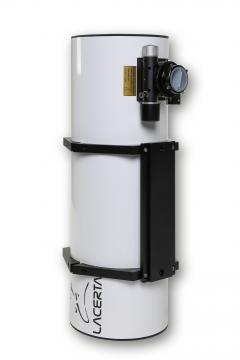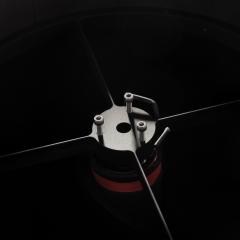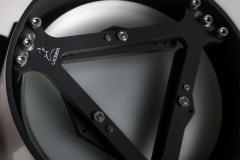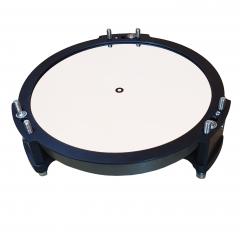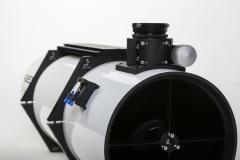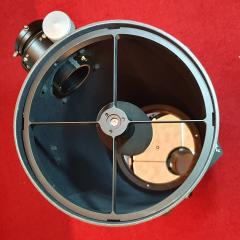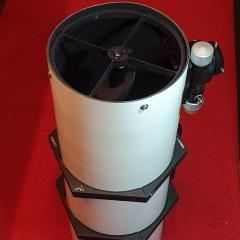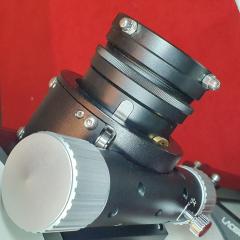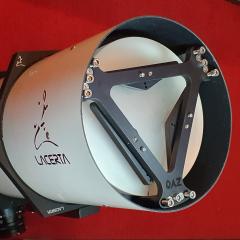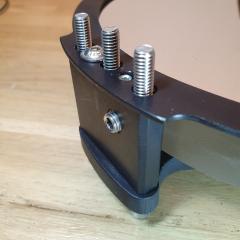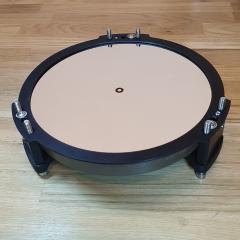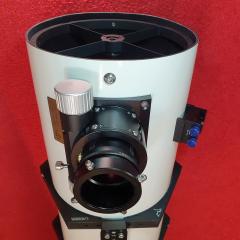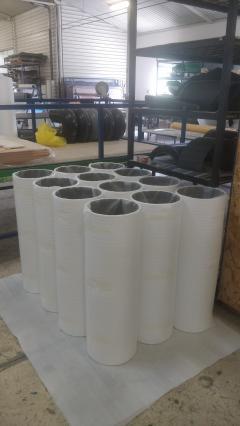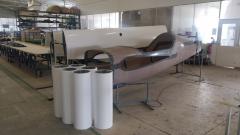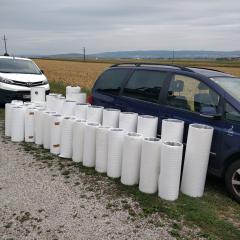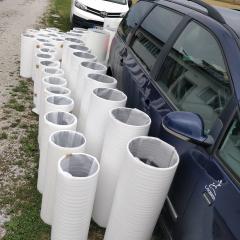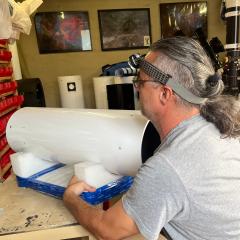Lacerta 250/1000 Fotonewton (Carbontube made in Hungary, assembled in Austria)
(--Lacerta hot product: FN25010c-new)
(--Lacerta hot product: FN25010c-new)
2999.00 EUR
(Bruttó árainkat 19% illetve 7% forgalmi adóval kalkuláltuk. Amennyiben az Ön országában az ÁFA magasabb, a LACERTA GmbH-t átvállalja az ezen felüli adóköltségeket.)
plusz szállítás
(Bruttó árainkat 19% illetve 7% forgalmi adóval kalkuláltuk. Amennyiben az Ön országában az ÁFA magasabb, a LACERTA GmbH-t átvállalja az ezen felüli adóköltségeket.)
plusz szállítás
Márkanév:
--Lacerta hot product
átméro: 250mm
fókusz: 1000mm
állvány: OTA
Szállítási súly: 35kg (Szállítási költség)
Szállíthatóság
(a raktárkészlet tájékoztató jellegű és tartalmazza a félretett mennyiséget is)
Wien: Elörendelés lehetséges
Linz: Elörendelés lehetséges
Raktár: Elörendelés lehetséges
Nyitvatartás
Másutt olcsóbb? weiter...
átméro: 250mm
fókusz: 1000mm
állvány: OTA
Szállítási súly: 35kg (Szállítási költség)
Szállíthatóság
(a raktárkészlet tájékoztató jellegű és tartalmazza a félretett mennyiséget is)
Wien: Elörendelés lehetséges
Linz: Elörendelés lehetséges
Raktár: Elörendelés lehetséges
Nyitvatartás
Másutt olcsóbb? weiter...
| Ezt is ajánljuk: | ||
|---|---|---|
|
FN2008c... 2399.00 EUR |
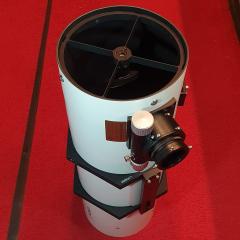
|
|
|
bag2501... 79.90 EUR |

|
|
|
LosEQ8 99.90 EUR |
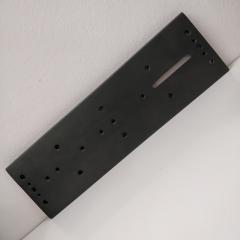
|
|
|
FFB30plus 219.90 EUR |
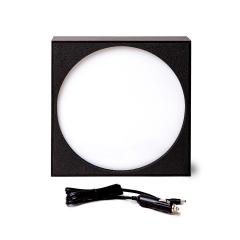
|
|
Ezt is ajánljuk:
 |
FN2008c-new | 200/800 Lacerta Foto-Newton karbon tubus OctoPlus kihuzattal, Edition 2021 (Carbon-tube made in Hungary, assembled in Austria) | 2399.00 EUR | |
 |
bag25010newton | Bélelt deLuxe transzporttáska 250/1000 tubushoz | 79.90 EUR | |
 |
LosEQ8 | Losmandy prizmasín EQ8-hoz (15mm vastag) furatokkal | 99.90 EUR | |
 |
FFB30plus | Flatbox (D=354mm) pl. 30cm-es Newtonhoz DSLR és CCD Flatfield-felvételekhez | 219.90 EUR | |
 |
Nexus-075 | Starizona Nexus 0.75x Newtonian Focal Reducer/Coma Corrector | 699.00 EUR | |
 |
KomakorrF4 | Skywatcher aplanatic kómakorrektor F/4-F/5 távcsövekhez (Gyulai P.) | 344.89 EUR |
Terméktámogatás
FN25010c-new_Newton_Justieranleitung_ohne_Justierokular.pdf
FN25010c-new_Photonewton_Collimation_Primer_EN.pdf
FN25010c-new_Photonewton_Justage_Primer.pdf
FN25010c-new_Photonewtons_neue_Zelle.pdf
FN25010c-new_Photonewton_Collimation_Primer_EN.pdf
FN25010c-new_Photonewton_Justage_Primer.pdf
FN25010c-new_Photonewtons_neue_Zelle.pdf
Video
Fotók
KALENDARIUM
INFO!
Code: MGEN-3 | A szállíthatóság továbbra is stabil:
Az összes szükséges alkatrész jelenleg raktáron van központi raktárunkban.
Az új megrendeléseket a fizetés kézhezvételétöl számított 2-3 munkanapon belül teljesítjük.
további infó
INFO!
Code: FN008c-new | A szállíthatóság javult:
Új rendeléseket szállítási határideje kb. 120 nap
Fizetés kb. 30 nappal a tervezett szállítás elött, vagy értesítésünket követöen azonnal esedékes!
további infó
INFO!
Code: FN25010c-new | A szállíthatóság javult:
Új rendeléseket szállítási ideje kb. 4 hónap
Fizetés kb. 30 nappal a tervezett szállítás elött, vagy értesítésünket követöen azonnal esedékes!
további infó
INFO!
Sötéttér mikroszkópok vérvizsgálathoz Sötéttér mikroszkópját az Ön kívánsága szerint konfiguráljuk és építjük össze.
Új megrendeléseket a fizetés kézhezvételétöl számított 2-3 hónapon belül teljesítjük.
további infó
INFO!
Code: MGEN-3 | A szállíthatóság továbbra is stabil:
Az összes szükséges alkatrész jelenleg raktáron van központi raktárunkban.
Az új megrendeléseket a fizetés kézhezvételétöl számított 2-3 munkanapon belül teljesítjük.
további infó
INFO!
Code: FN008c-new | A szállíthatóság javult:
Új rendeléseket szállítási határideje kb. 120 nap
Fizetés kb. 30 nappal a tervezett szállítás elött, vagy értesítésünket követöen azonnal esedékes!
további infó
INFO!
Code: FN25010c-new | A szállíthatóság javult:
Új rendeléseket szállítási ideje kb. 4 hónap
Fizetés kb. 30 nappal a tervezett szállítás elött, vagy értesítésünket követöen azonnal esedékes!
további infó
INFO!
Sötéttér mikroszkópok vérvizsgálathoz Sötéttér mikroszkópját az Ön kívánsága szerint konfiguráljuk és építjük össze.
Új megrendeléseket a fizetés kézhezvételétöl számított 2-3 hónapon belül teljesítjük.
további infó
WELCHES TELESKOP SOLL ICH KAUFEN?
Kérdezzen tőlünk...
BÉCS-i boltunk
LINZ-i kirendeltségünk
Cím és nyitvatartás
Fizetési és szállítás
Vásárlás előtt (németül)
Visszaküldési formulár
-----------
Katalógusok
Használati utasítások
Firmwares
...továbbiak
Tesztfotók
Testberichte
#
Video gyűjtemény
astronomieforum.at
astronomie.de
mikroskopie-forum.at
bird.at Forum
Linkek és Partnerek
Online szakkör (magyarul, készülőben)
Rendezvények
Cégadatok
Vásárlási feltételek
Felelősség kizárása (linkek tartalmára vonatkozóan)
Copyright (képek és szövegek használatának jogosultsága)
Termék visszaküldése (vásárlástól való elállás szabályai)
© 2005-2019 Lacerta GmbH.
All rights reserved.

 Fizetési és szállítás
Fizetési és szállítás